We were blessed with great weather and clear blue skies on my second day in
Datong. Perfect for seeing tourist spots that we have planned for the day. I was off with a group and we rented a van provided by our hostel and I can say that the 75¥ fee per person was not bad given how far those tourists spots were located from each other. After an hour, we have arrived at our first stop, Yungang Grottoes.
 |
| Yungang Grottoes, Datong |
Yungang Grottoes (云冈石窟
Yúngāng Shíkū), located 16 kilometers south-west of Datong, Shanxi Province, is the city’s most celebrated and crowded tourist attraction. This 1,500-year old UNESCO World Heritage Site is located at the base of Wuzhou Shan Mountain and is filled with 51,000 statues occupying a total of 252 caves. This cave is the center of ancient Buddhist art in North China that has very apparent influences from Indian, Middle Eastern and of course, local Chinese designs.
 |
| previous entrance to the site that will take you to the middle caves |
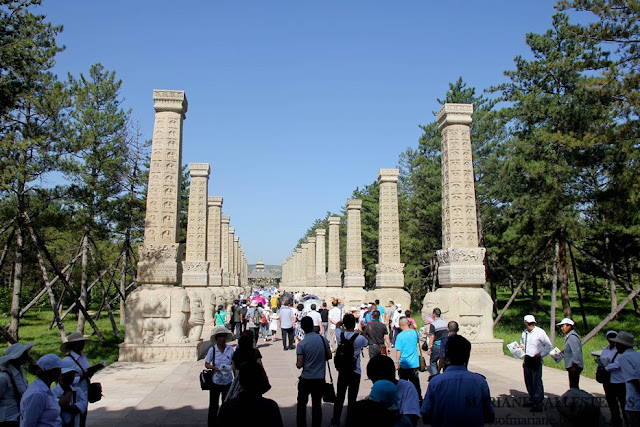 |
| To reach the caves, you’ll first need to pass a series of monasteries which I think are just newly constructed |
The kilometer-long series of grottoes are split into three zones: east, middle and west part. The Buddha figures also vary in sizes: there are those intricate, tiny figurines (smallest figure is 2 centimeters!) and ones that are humongous – both of these types were very meticulously done. So impressive! Though, with its long age, disasters encountered and exposure to natural elements, weathering and erosion is already common sense so some of the statues have missing parts or sadly, have been totally wrecked, good thing is that the government putts a big effort on preserving and restoring these carvings, after all, it’s that one spot that drives the tourist in to the city.
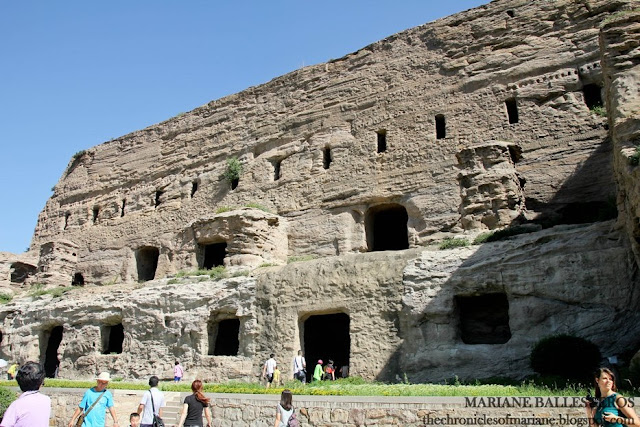 |
| The eastern caves |
Cave No. 1 (Stone Drum Cave) and Cave No. 2 (Cool Spring Cave) in the east zone are two of the first temples constructed in Yungang. Inside Caves 3 and 4 is a big Buddha statue depicted to be in a seating position, with two smaller Bodhisattvas on his side.
 |
| Buddha with a missing eye |
 |
| niche caves |
The middle caves contain the most colorful carvings in the grottoes that I have seen. Cave No. 5, Cave of the Great Buddha, gives shelter to a 17-meter tall sitting statue of Buddha, which is the largest in Yungang. Cave No. 6 was pretty interesting as you can see the 33 reliefs depicting Buddha’s life, from birth to enlightenment. The caves here are also fronted by wooden temple structures, similar to a pagoda.
 |
| wooden casing on the caves |
 |
| Bodhisattva and colorful carvings on the wall showing details of Buddha's journey |
 |
| awesome designs on the entrance |
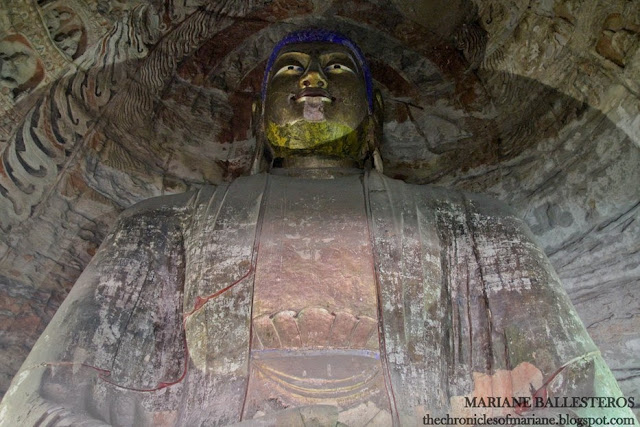 |
| one of the most colorful statues in the site, it is also the largest in the area that stands 17-meter tall |
 |
| detailed ceiling |
It was really unfortunate that Caves No. 9-15 were off limits to tourist due to restorations. I couldn’t help but peek at the small openings in the covers to at least have a look on what is in there and it looks grand! These caves are said to keep the most colorful sculptures of the site so just imagine how disappointed I was.
 |
| a big statue looks my way! |
Caves No. 16 to 20 of the western zone store statues that are said to represent an emperor during the Bei Wei dynasty. The figures here are also gigantic!
 |
| the western caves |
 |
| a big statue overlooking a crack at the wall |
 |
| details of the mini Buddhas |
The four big Buddhas of the western caves.
Cave No. 20, White Buddha Cave, is not roofed or cased as the walls and ceiling that used to protect is collapsed a long time ago, making this one exposed to all the natural elements, so it is a wonder how detailed and remarkable is still stands as of present. One of its notable features are its eyes, that is said to have been replaced because the original stone was stolen by the Japanese during the war, and its long ears that signifies Buddha’s character of being a good listener to his followers.
There were a couple of smaller caves and niches on the more
western part and some were even closed to tourists. Afterwards, I continued to
see the museum wherein they store some excavated items during Northern Wei Dynasty and some statues from the grottoes itself.
 |
| pagoda of Buddha carvings |
 |
| these caves are closed for tourists |
 |
| Yungang Grottoes Museum |
 |
| traditional yurt of Northern China, it looks a bit small though |
I am surprised how a place as extraordinary and world class
as Yungang Grottoes is not as famous as
The Great Wall and
Terracotta Warriors,
and I can say that the tour here was one of the highlights of my trip to China.
It is so fascinating to think how something this old still stands strong and
magnificent. I can just imagine how majestic it would have looked 1500 years
ago! Definitely one of my recommended places in China.
How to go to Yungang Grottoes:
Take Bus 4
going to Xinkaili then transfer at Bus 3-2 going directly to the caves.
 |
| blue skies of Datong |
Day 1: Datong
City Tour

|
Day 2: Datong
Yungang Grottoes

Hanging Monastery

|
Day 3: Pingyao
City Tour
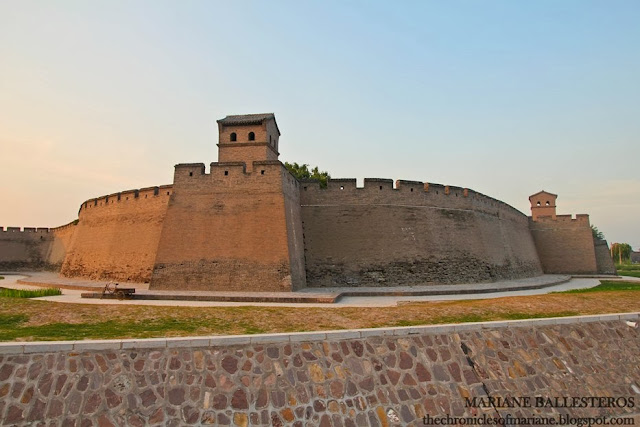
|
Day 4: Pingyao
City Tour and Attractions

|
Day 5: Pingyao
Architecture/Art

|
Day 6: Xi'An
City Tour

|
Day 7: Xi'An
Yangling Mausoleum

|
Day 8: Xi'An
Terracotta Army

|
Day 9: Beijing
Qianmen Street/798 Art District

|
Day 10: Beijing
Nanluoguxiang/
Wangfujing

Tiananmen/
Forbidden City

|
Day 11: Beijing
Summer Palace

|
Day 12: Beijing
Great Wall

|
Railway Train Experience
Standing, Hard Seats, Sleepers

|
12 Day Trip
Itinerary & Budget
.jpg)
|
More of China here





















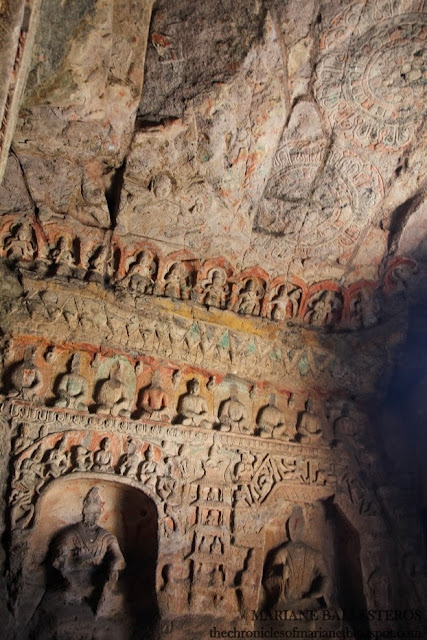































.jpg)
Wow! I'm so amazed of those photos~~ It makes me wanna go to China A.S.A.P^^* Hope to visit that country soon.
ReplyDelete